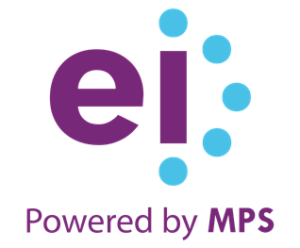Partial Gamification and other innovative approaches in Compliance Training
I will illustrate three of these approaches used in Compliance courses featuring:
- Partial Gamification
- Formative assessment strategy to visually highlight the impact of learners’ choices
- Story-based learning
Example 1: Partial Gamification
Background
In this project, we chose partial gamification approach for inline checks and assessments. Although the course content was treated using conventional learning design methodologies, we engaged the learners by presenting them with challenges at the end of a topic and rewarding them with a key card to move to the next topic.
Our concept
Building on the theme of Risk management, we introduced the concept of an “Access-key” that would enable the learners to move from one topic to the next. This would be earned by successfully clearing the end of topic assessments.
The theme was further woven into the overall visual strategy. For instance, the Topic starter would look like this:
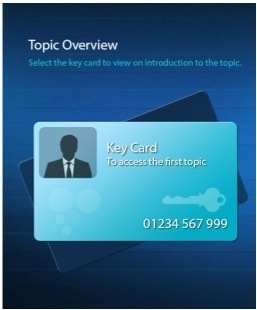
The questions that would gate the learner’s entry to next Topic would appear as shown here.

Example 2: Formative assessment strategy to visually highlight the impact of learners’ choices
Background
Often, the learners’ focus when they go through a Compliance course is to somehow complete it, pass the Assessments (typically at 80% cut off), and obtain the Certificate of Completion.
In the process, they miss a very crucial aspect. In real life, some of the choices they make can seriously jeopardize their organization’s reputation or cause serious harm to them. As a Learning Strategist, I wanted to determine ways that we could use to highlight this significant aspect.
Our concept
We followed an approach to highlight the impact of the choices they make visually. As shown here, we introduced the concept of a Risk Meter which would visually show the different degrees of risk associated with the way the learners chose the options (within a given question). As an extension, the formative feedback that accompanies each question would reinforce not just the right/wrong response but also help the learners understand the impact their choices will have on them as well as their organization.
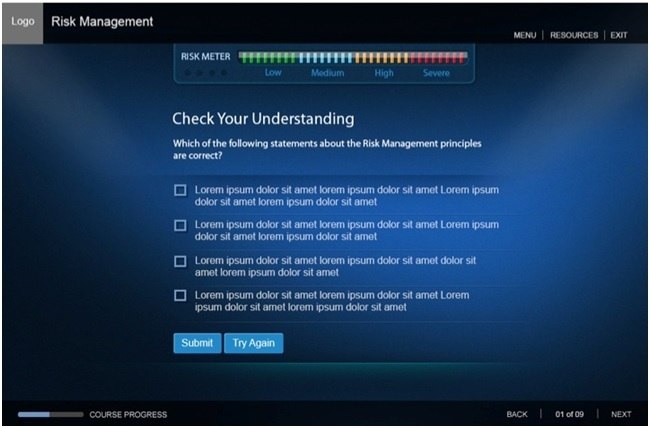
Example 3: Story-based learning
Background
All of us are familiar with the impact of a story on recall and retention of information. Surprisingly, most Compliance courses that we developed in the past did not use this, although we used scenarios, case studies and examples extensively.
Our concept
Our strategy was to make the content engaging by using an approach that would resonate with the learners. We presented this in a manner that would make them a part of the course (as if they were within it, rather than seeing it from outside).
We proposed a story-based approach that started with a challenging situation for the learners. This helped draw their attention, emotionally connect with the content, and use the course information to ascertain how to get out of the jam.
Here is the introduction to the cast of characters featuring two main characters (the Mentor and the Trainee).
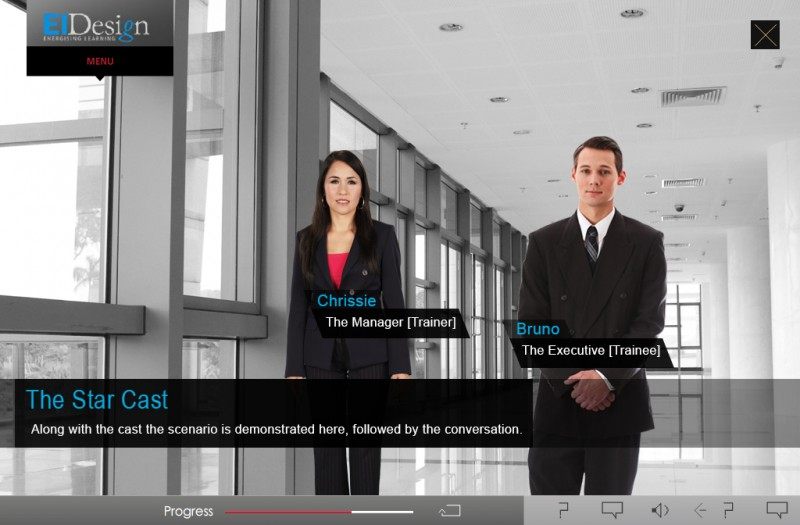
A discussion between two main characters was used to drive the entire learning and this storyline was further supported by other characters and sub-plots. The learning elements pertaining to the Compliance mandate were embedded within the story progression.
The screenshots here show conversation in a scenario and an assessment frame.
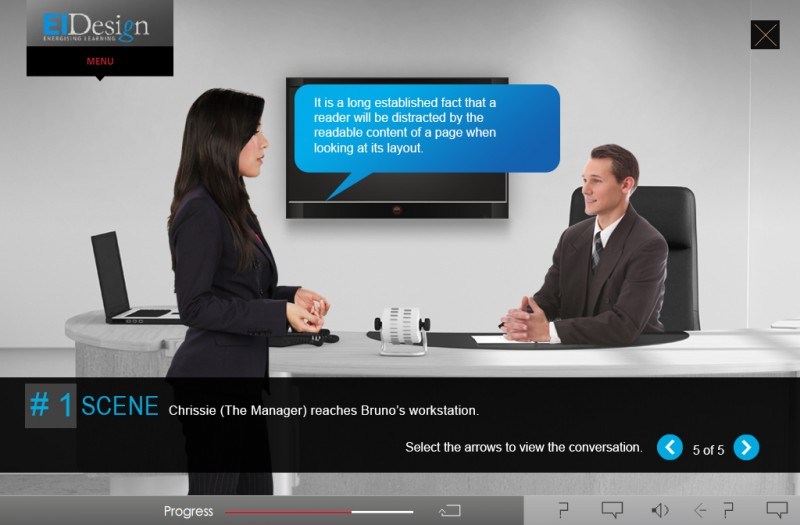
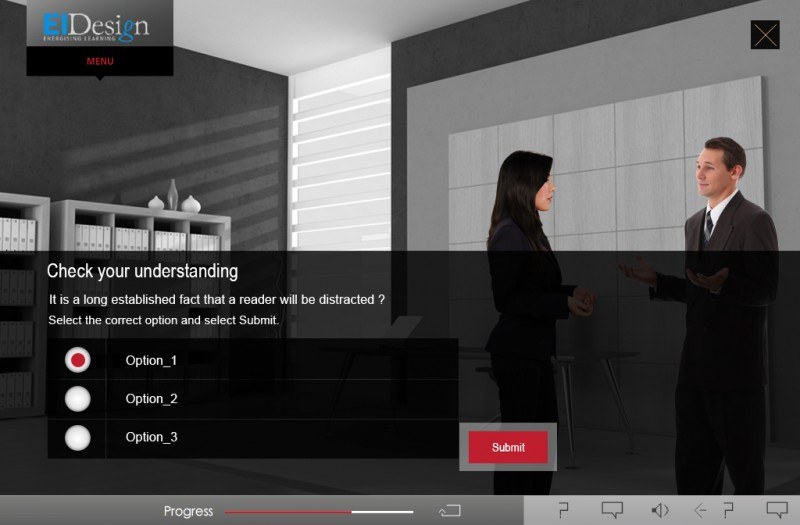
We used the following thread to drive the learning:
- Introduction to the cast of characters and the problem (the challenge that the trainee faces)
- Outline the events, their impact, and consequences (using the storyline)
- Incorporation of the learning elements, examples, and case studies
- Highlight dos, don’ts, and the right approach that the learners must follow (using Q&A between the main characters)
- Articulation of questions that are likely to be in the learners’ minds (using thr trainee)
- Guidance for learners, reinforcement of the important learning aspects and key take-aways, and formative feedback for learners (using the mentor)
I hope these approaches help you in enhancing the learning experience in your Compliance roll-outs. I look forward to your feedback and any other pointers that we could use in the upcoming courses.
Read more:
- 5 Tips To Encourage Employees To Comply With Compliance Training
- How To Create Engaging Compliance Courses Using Gamification And Microlearning
- Compliance Simplified: Using Creative Instructional Design Approaches
